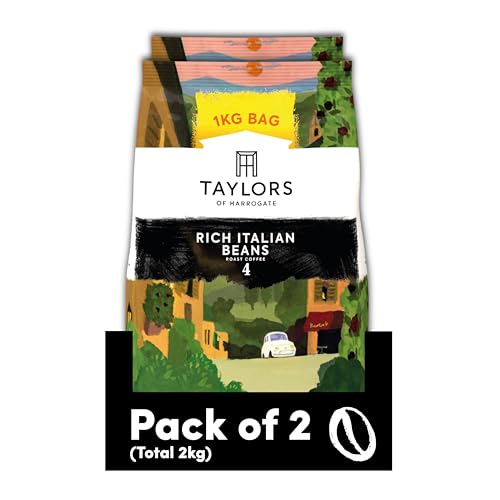What Is Coffee Beans Coffee And Why Is Everyone Talking About It?

What Are Coffee Beans?
The seeds of a cherry like fruit or plant are coffee beans. They grow best in climates and altitudes similar to the place they are grown and require a certain amount of soil moisture, composition and many other elements to come to fruition.

They are not only delicious however, they also offer many health benefits. Coffee is rich in trigonelline, which roasts, transforms into Nicotinic (a water-soluble vitamin B). It also has a high content of the phenolic acids like chlorogenic acids which help lower blood sugar.
Origin
The majority of people know the appearance of a roasted bean like, but few are aware that it was originally a fruit. A coffee bean is a seed that is produced by a specific species of Coffea plant. The berries usually split open and contain two beans, but around 5percent of the harvested beans, only one bean split. This kind of bean is referred to as"peaberry" and is also known as a "peaberry" and is typically sorting by hand and sold in separate packages.
The "Bean Belt" is an area of the world situated between the Tropics of Capricorn and Cancer, is where the majority of coffee is produced. Most countries produce coffee using a variety of methods, each giving it its own flavor and distinctive characteristics.
It is not clear the origin of coffee, however it is widely believed that the first coffee plants were cultivated in Abyssinia (now Ethiopia). The most well-known story tells of a goatherd, Kaldi who noticed his goats exuberant and bleating after eating bright red berries growing on nearby trees. Kaldi tried the berries and experienced feelings of excitement. Kaldi then introduced the drink to other people in his community and the popularity of the drink grew. It gained acclaim throughout the Islamic world during the 15th and 16th centuries, despite Islamic authorities declaring it to be intoxicating, which was forbidden by the Qur an.
Flavor
The flavor of coffee beans is affected by the location the species, farming methods and roasting method. Different flavors can be created by adjusting the temperature, duration, and pressure of the roasting process and the amount of airflow while it roasts.
The type of syrup used to flavor coffee beans can affect the flavor. After roasting beans, they are spray-painted with oil-based flavoring agent and left to sit for 30 minutes. This allows beans to absorb the oils. The flavored beans are classified and sorted.
Addition of flavor to coffee beans allows you to modify the taste of coffee without altering the color or texture. The flavor of coffee with flavored flavors is usually more intense than regular unflavored coffee. This is due to the fact that the beans that are flavored are immersed in flavoring syrup.
The flavor of coffee is also affected by the spices that are added to it when it is stored. Whole spices including cinnamon sticks, vanilla and cocoa beans can be mixed with freshly roasted coffee beans to give the beans a distinct flavor. This is best done when the coffee beans are roasted in an aerated container.
Health Benefits
Coffee beans have been linked to numerous health benefits. These benefits include reducing the risk of suffering from Alzheimer's, Parkinson's disease, liver disease and other diseases. The caffeine in coffee beans has been proven to improve memory and cognitive function. Coffee contains antioxidants that combat free radicals. The chlorogenic acid in coffee is believed to prevent chronic illnesses such as heart diseases and diabetes.
Consuming coffee beans has been associated with a lower chance of developing type 2 diabetics. It has also been found that it may help lower the risk of Parkinson's disease, liver disease, and cancers of the colon and colorectal tract. Coffee is linked with improved brain function and may aid in the prevention of depression. According to a variety of studies the presence of a certain acid in coffee can increase levels of serotonin and dopamine.
Although drinking coffee beans raw is a good option for most people however, it should not be used as an alternative to a healthy diet and exercise. It is recommended that not more than 30 coffee beans be consumed in a day and the effects of caffeine should not be overdone because it can trigger side effects including jitters, anxiety and insomnia. Additionally, if you suffer from acid reflux or an insensitive stomach, you should avoid coffee beans.
Preparation
The coffee plant produces two seeds (or bean) that are in a flat fashion against each other. Each fruit is surrounded by the outer skin, known as the exocarp, and a thin layer of pulp, known as mesocarp, that is placed on the top. Prior to roasting, the coffee seeds are removed, separated and cleaned. The beans can be processed in three ways: dry, moist, or a hybrid that is known as wet-processed. The beans are then roasted, and can be ground, or left in their entirety.
Coffee bean varieties offer many flavor profiles that complement an array of drink, dessert and food recipes. The choice of coffee beans for the recipe will be based on the desired flavor and texture.
specialty coffee beans has an oil layer that is intact when it's complete. This layer protects the aroma and flavor compounds of the coffee from air. After grinding the coffee bean, these compounds are exposed and lose their taste with time. The temperature of the water is crucial in brewing coffee to retain and preserve the flavors. Pouring at a low temperature extracts less of the flavor that is still developing while pouring at a high temperature releases more. This is why it's vital to prepare your coffee at the optimal temperature for your tastes. If you don't, the flavor will quickly turn bitter or sweet.
